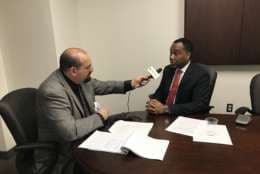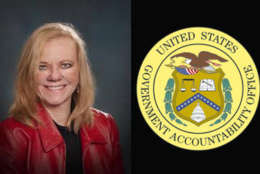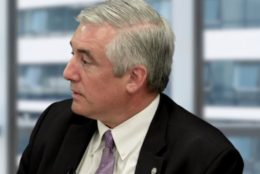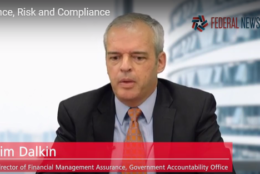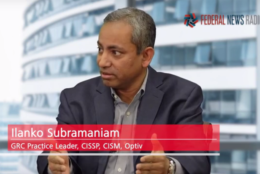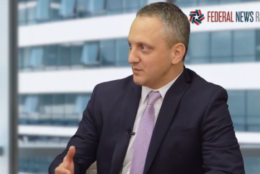Risk management
-
Howard Whyte, the FDIC chief information officer, said a third-party assessment set the cyber roadmap for the future.
March 09, 2018 -
As the the Internet of Things and 5G become more prevalent, analysts say the government needs a strategy on how it buys hardware and software.
March 09, 2018 -
Alina Romanowski says it's important to make up your mind early in your career to take the risks that will help you find your strengths.
February 21, 2018 -
The Joint Force Headquarters – Department of Defense Information Networks (DoDIN) reached full operating capability in January.
February 20, 2018 -
Ross Nodurft, the vice president at One World Identity and the former OMB unit chief for the cyber and national security unit, said managing high valued data is key for better cybersecurity.
February 09, 2018 -
GAO said Veterans Affairs' policies and risk management has not kept up with the evolution of security for many federal buildings.
January 24, 2018 -
Amid budget uncertainty, agency chief financial officers are using data analytics to determine where the agencies can most effectively streamline programs.
January 10, 2018 -
Barry West is acting deputy chief information officer and senior accountable official for risk management at the Homeland Security Department.
November 22, 2017 -
How can risk management strategies reduce operational risk? How has the US Department of Labor employed risk management strategies to reduce improper payments in its Unemployment Insurance program? Join Michael Keegan next week as he explores these questions and more with Prof Justin Bullock, co-author of the IBM Center report, Risk Management and Reducing Improper Payments: A Case Study of the U.S. Department of Labor.
August 28, 2017 -
Near-weekly, worldwide cybersecurity threats underscore the importance of network, end-point, and application monitoring. Federal agencies have worked under a policy of continuous monitoring/continuous diagnostics and mitigation for a decade. But given the seemingly unending growth in attack vectors, the spread of internal infrastructure to commercial cloud providers, and the rise of insider threats – they’ve got to up the game into what might be called advanced cyber monitoring.
July 05, 2017 -
From proving bomb parts can get through front-door screenings to examining the Fort Hood shootings, the Government Accountability Office has been following the federal insider threat situation for years. Its work covers both the physical world and cyberspace.Joseph Kirschbaum, GAO director of defense capabilities and management, joined Federal Drive with Tom Temin to discuss the range of work he's overseen.
June 21, 2017 -
We’ll all be hearing more in the next few years about risk management, compliance and governance. The Government Accountability Office puts out the Green Book, containing standards for financial control in federal accounting.
March 10, 2017 -
Governance, risk and compliance (GRC) go hand-in-hand. Risk is understanding uncertainty. Compliance focuses on adhering to policies and regulations, micro and macro. Governance is key for stakeholders who put into processes and practices the whole operation of compliance.
March 03, 2017 -
At the Justice Department, with so many operations, to look at risk on an enterprise level, what does that mean? Risk knowledge starts with line employees and moves all the way up to policy-makers and those establishing the controls.
February 24, 2017 -
The world is full of risks. Federal agencies no less than commercial organizations, operating as they are in a complex and increasingly threatening world, face risks to their finances, their physical security, and their ability to do business thanks to vulnerabilities in their information technology systems.
February 16, 2017

